by Chiara Ruberti
_
A hidden world war is being waged in Bosnia and Herzegovina, since all world forces are directly or indirectly involved in it and, on Bosnia and Herzegovina, all the essential contradictions of this and the third millennium are broken.
(Kofi Annan, Report of the Secretary-General, p. 503)
A Sarajevo sniper is interviewed in a darkened room. It seems incredible to me: she is a woman. A woman shooting a six-year-old boy? Why? “In twenty years he would have been twenty-six”, is the reply that the interpreter translates. The cold becomes more intense, you get cold inside. The interview ends there, there is no other possible question.
(Gino Strada, Pappagalli verdi. Cronache di un chirurgo di guerra, Feltrinelli, 1999)
The International Criminal Tribunal for the former Yugoslavia (ICTY) was created in The Hague in 1993 by the United Nations Security Council to investigate war crimes in the Balkan conflict: siege, concentration camp detention, mass murders, genocide. For the first time in history, a tribunal is set up in the middle of a war, with the task of prosecuting and judging the main political and military perpetrators of the crimes committed.
In 2017, the last year of the ICTY’s activity, the photographer Martino Lombezzi (Genoa, 1977) and the journalist Jorie Horsthuis (Amsterdam, 1981) had the opportunity to access the internal spaces of the court and the archives. The result is “Resolution 808”, an in-depth visual investigation where Lombezzi’s photographs are combined with Horsthuis’s journalistic work.
Twenty-five years after the end of the war in Bosnia and Herzegovina, this investigation is a precious document of something that seems to be very distant in time, but which has marked the history of the Balkans and of the whole Western world permanently.
We asked Martino Lombezzi to tell us more about this important work, which in Italy was exhibited at Officine Fotografiche (Rome) as part of the Diplomacy Festival in an exhibition curated by Daria Scolamacchia and in the headquarters of the Forlì Campus of UNIBO as part of the Human Rights Nights Films and Arts Festival.
In 2003, you finished your university studies with a degree in Contemporary History and a thesis on the birth of the ICTY and its role in the Balkan wars. You let this matter settle for many years before deciding to tackle it with a photographic project. How did the idea of Resolution 808 and the collaboration with Jorie Horsthuis come about?
Working on this project was like coming full circle for me. In fact, after graduating I found myself at a crossroads: continuing with my studies, trying to pursue an academic career or working with photography, which was already becoming a profession during my university years and had allowed me to make a little money. I chose this path, but the desire to go further with my studies has always remained. In the following years I travelled many times to the countries of the former Yugoslavia, which have long remained the centre of my interests as a photographer. On one of these trips in December 2007, on the eve of independence, I met Jorie; we were in Orahovac, a small Serbian enclave in Kosovo. She had been there for some time as a journalist and researcher studying small Serbian communities. Over the years we have always kept in touch, sharing our interest in the Balkans.
The idea of returning to work on the Court was born between the end of 2016 and the beginning of 2017 from a consideration: after many years of disinterest, at the end of that year two events were planned that would have brought the attention of the media back to The Hague. The first was the verdict of the trial of Ratko Mladic, the Bosnian Serb General considered to be responsible for Srebrenica. The second was the closing of the court itself, after 25 years of investigations and trials. We therefore started with the aim of producing a work which could be ready for that date, to be distributed on the European editorial market.
We were fascinated by the idea of trying to represent the institution from the inside, to give it a different and independent image from the one that the Court itself offered to the media, showing how it worked and recounting the experiences of those who had worked on it for a long time. In fact, these are offices: nothing visually exciting. Offices where, however, for more than twenty years, the most terrible crimes committed on European soil after the Second World War have been analyzed, reconstructed and discussed in detail. Courtrooms that saw all those responsible for the destruction of a myth, the Yugoslav one, which still had its charm. I was interested in the photographic challenge of trying to evoke these events and the marks they had left in spaces and people.
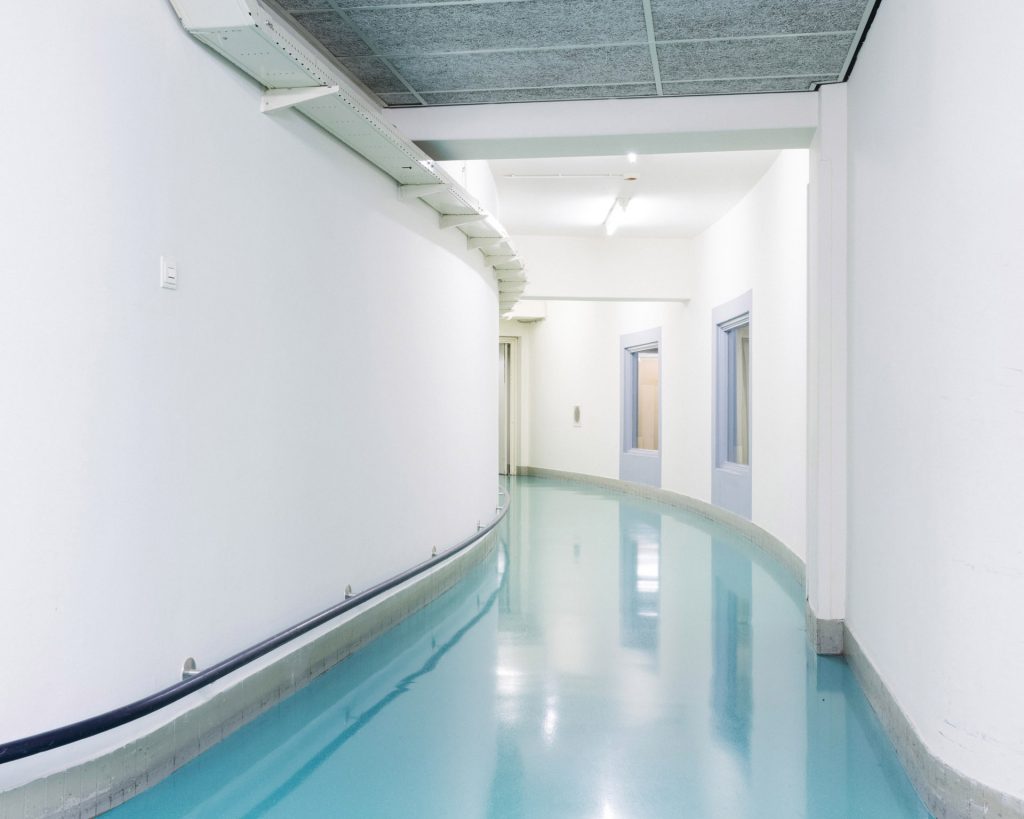
After long months of waiting and complicated bureaucratic steps, we got first access. This is not a place where you can move freely and it hasn’t always been easy to negotiate and get the chance to work independently, especially for two freelancers with few credentials and a self-financed project. We then managed to build a network of contacts and the necessary trust, which allowed us to make several subsequent visits, which were increasingly targeted. We thus managed to have a body of work ready for November 2017, which was then published in several European newspapers and magazines. The project has grown, and thanks to publications and grants we have added other chapters: now we are working in the Balkans on the issue of local justice.
What did having had the opportunity to access the ICTY spaces and its archives from inside mean and what did it add to what you had already investigated and knew about the wars in the Balkans and the end of Yugoslavia?
I had already visited the court in the past, in 2013, as a spectator of the trial of Radovan Karadzic. Even then it had been exciting for me, like watching a living piece of history. However, having the opportunity to go to the other side, to enter those courtrooms normally closed to the public, to be able to place the tripod on those same carpets gave me a certain thrill. There was also the feeling of having accessed the “backstage” of what is basically a great “representation” of justice.
The court opened in the early 90s, and inside its offices you can still breathe that atmosphere in a way, in the furniture, in the organization of the spaces, almost even in the sense of style of some employees. Many of them at various levels are from the Balkans: some describe the ICTY as a “mini Yugoslavia”.
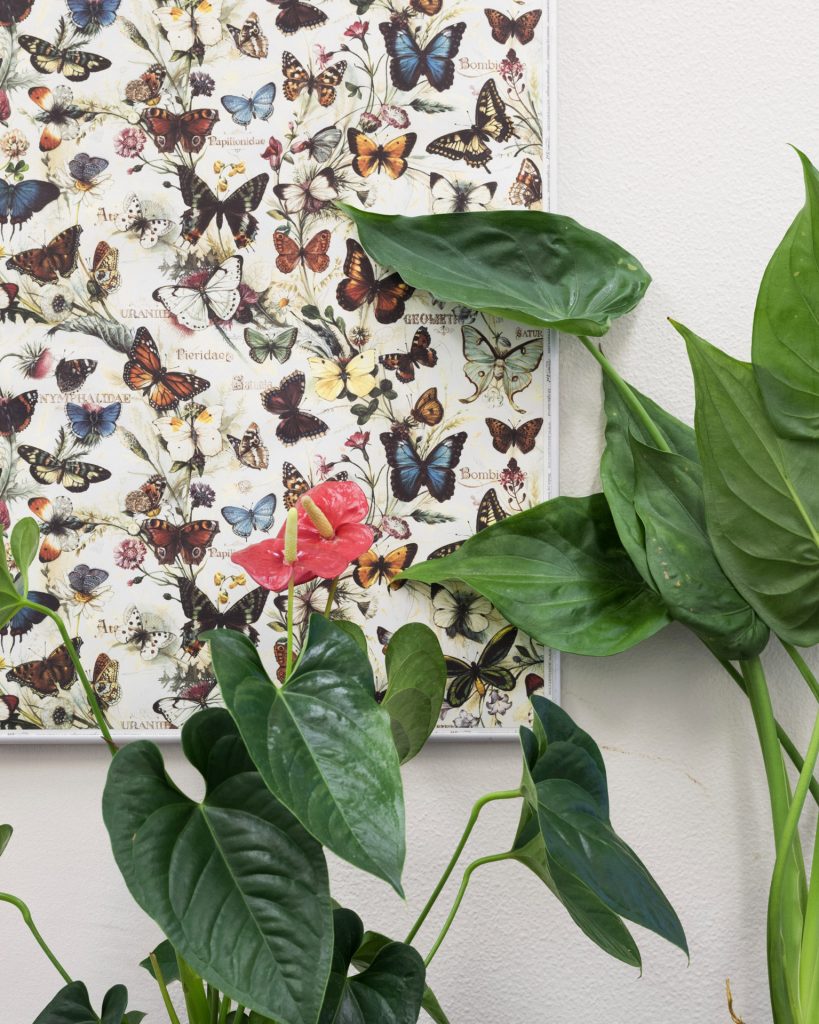
The ICTY has been the centre of media attention several times over the years, but there was hardly any talk of those who made it possible: the interpreters, lawyers, judges, whom you met and interviewed with Jorie. How did you approach the stories they had to tell? And what of those stories came to you from the spaces they had inhabited?
Going deep into the stories and the role of the translators was one of the initial moving forces of this work, and certainly their stories are among the most interesting we have heard. First, because unlike the judges and members of the prosecutor’s office, practically all of them come from the former Yugoslavia, and have therefore had some experience of the conflict. Being in the courtroom and being the “voice” of victims and executioners alike, or of the political and military leaders who have brought their countries to ruin, has certainly required exceptional professionalism and forced them to endure a very high level of stress and trauma, which many of them still pay today.
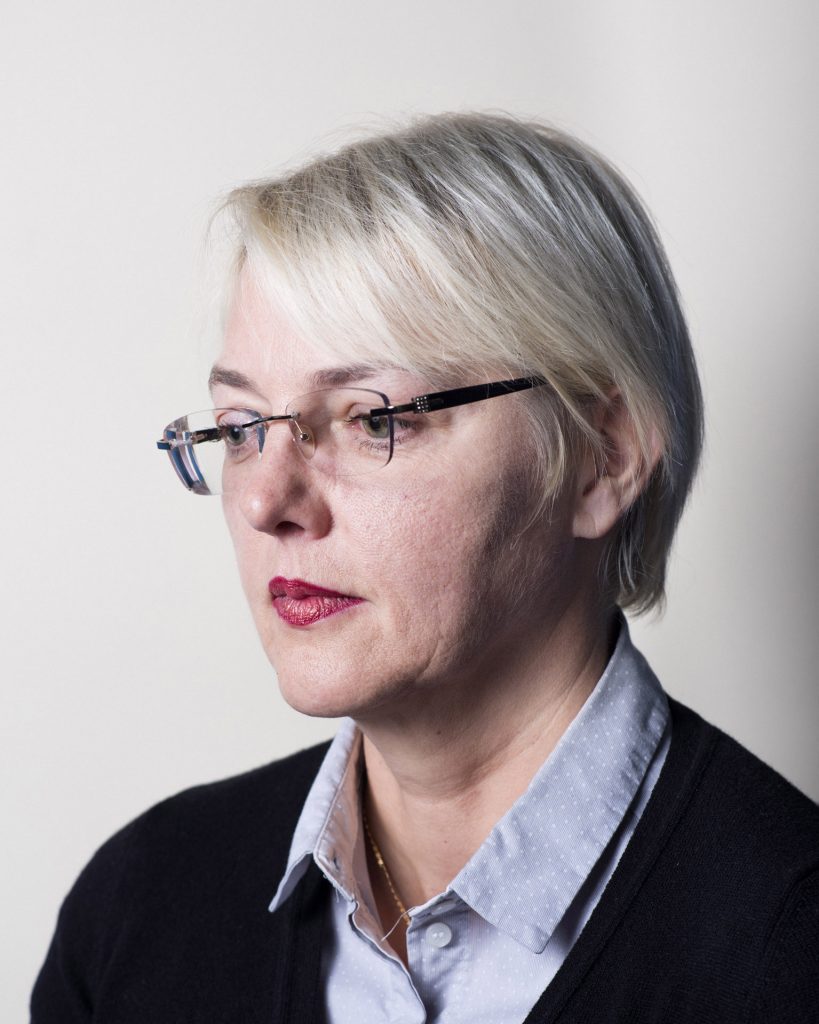
From a visual point of view, I looked for an effective way to portray these people, which could invite the observer to dig into their inner experience. It was also interesting to be able to reproduce some of the notes that the interpreters take during the trials, notes written during the debate on the meaning of single but perhaps fundamental words, on which the value of evidence or testimony was sometimes played.
Defense lawyers and judges are also very interesting characters full of anecdotes: both very free and independent from the bureaucratic mechanism of the court, they were fundamental to deepen the complexity and the political facets of this institution. Among others, we also collaborated with Dragan Ivetic, one of Mladic’s defense lawyer, who allowed us to follow him in the days before the sentence.
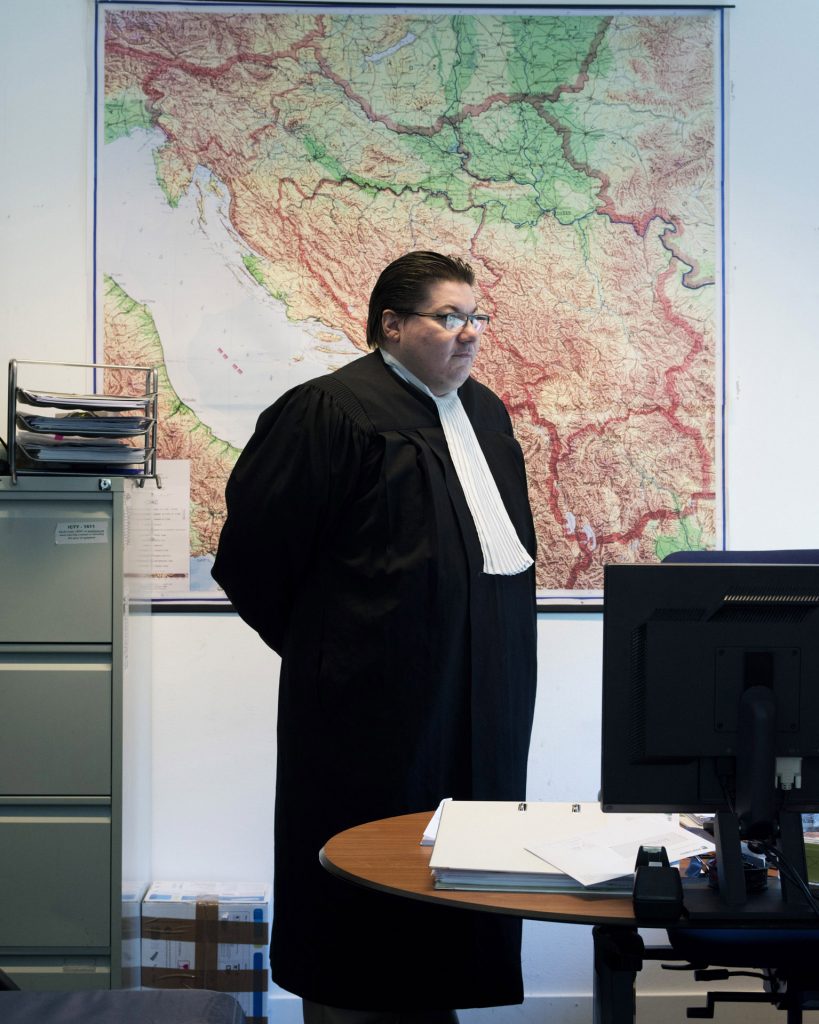
In 2018 you had access to the OTP evidence archive. These objects have gone to constitute a further, fundamental chapter of your work. What did you find?
It was essential for us to have access to this archive, which had never been visited or photographed before: it represented both a new chapter in our journalistic work and an important visual element of the project. Unlike the Court archive, which is fully digitalized, accessible to the public and mainly contains documents, in the cell of the OTP (prosecutor’s office) there are thousands of objects that have been collected during years of field investigations. The provenance and history of each of these finds are very diverse: clocks found on corpses exhumed from mass graves, the gun seized from Nasser Oric at the time of his arrest, Ratko Mladic’s war diary recovered behind a false wall in his Belgrade apartment, shells of a sniper on the heights of Sarajevo, the book Waging modern war by the American general Wesley Clark in charge of the bombing in Kosovo, an old election poster by Slobodan Milosevic. I spent three days in the company of the chief archivist of the OTP, together we analyzed and photographed a wide selection of objects. They represent the most direct visual contact between the anonymous offices of The Hague and the events on the battlefields. In a place that is supposedly cold and detached from events, and which is thousands of kilometers from the Balkans, coming into contact with these finds has created a strong short circuit: many of these objects, especially those coming from exhumations, have retained their smell, a smell of death that I believe will remain forever in my nostrils.
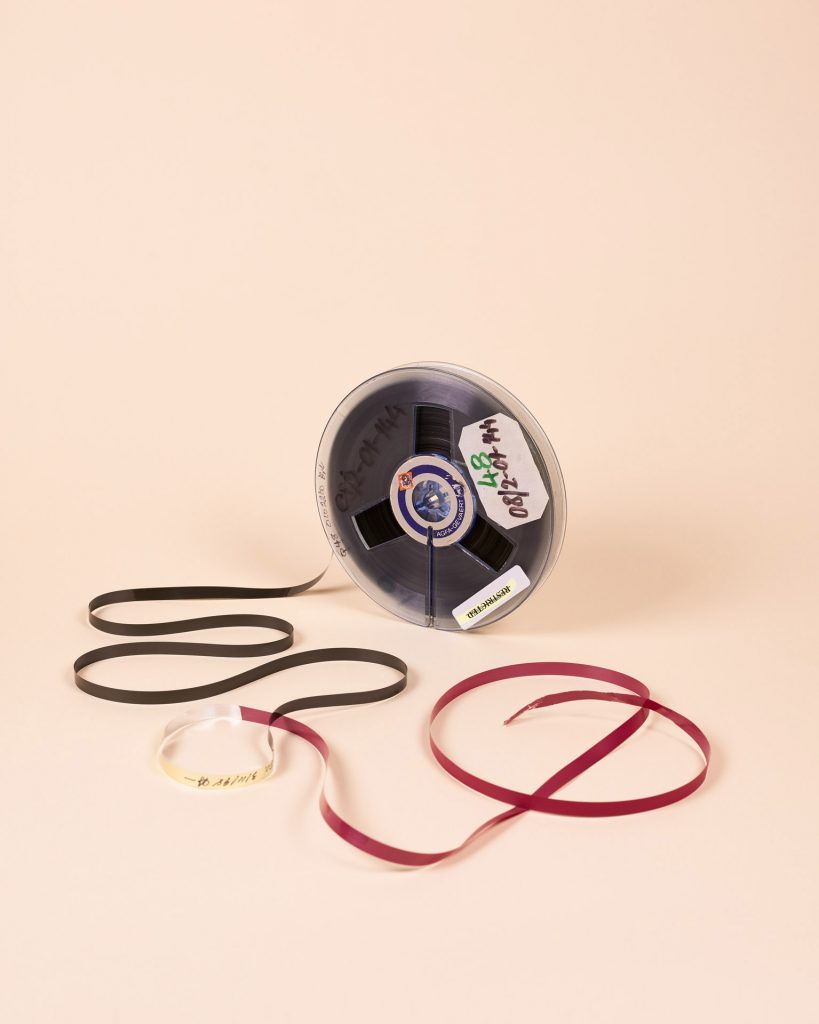
I had to do some research to understand the meaning of the project title. Do you want to explain it to us?
With resolution 808 of February 22, 1993, the United Nations decided to create an international tribunal to investigate and try the crimes that were taking place in the former Yugoslavia. It is the first time since Nuremberg that the international community has taken such a decision. Resolution 808 is a bureaucratic act among many, to which a simple progressive number is associated, an act written with the typical formal language that characterizes the UN provisions. From this decision derives the first and largest experiment in international justice ever carried out. We chose this title to remember that decision but also because it seemed to us that it could reflect a contrast that runs through the whole project: that between the detachment, the formality and the alleged analytical coldness of justice and the disruptive heat of the traumatic violence of the conflict, which involved anyone who has worked in this institution.
All images: © Martino Lombezzi
September 30, 2020




